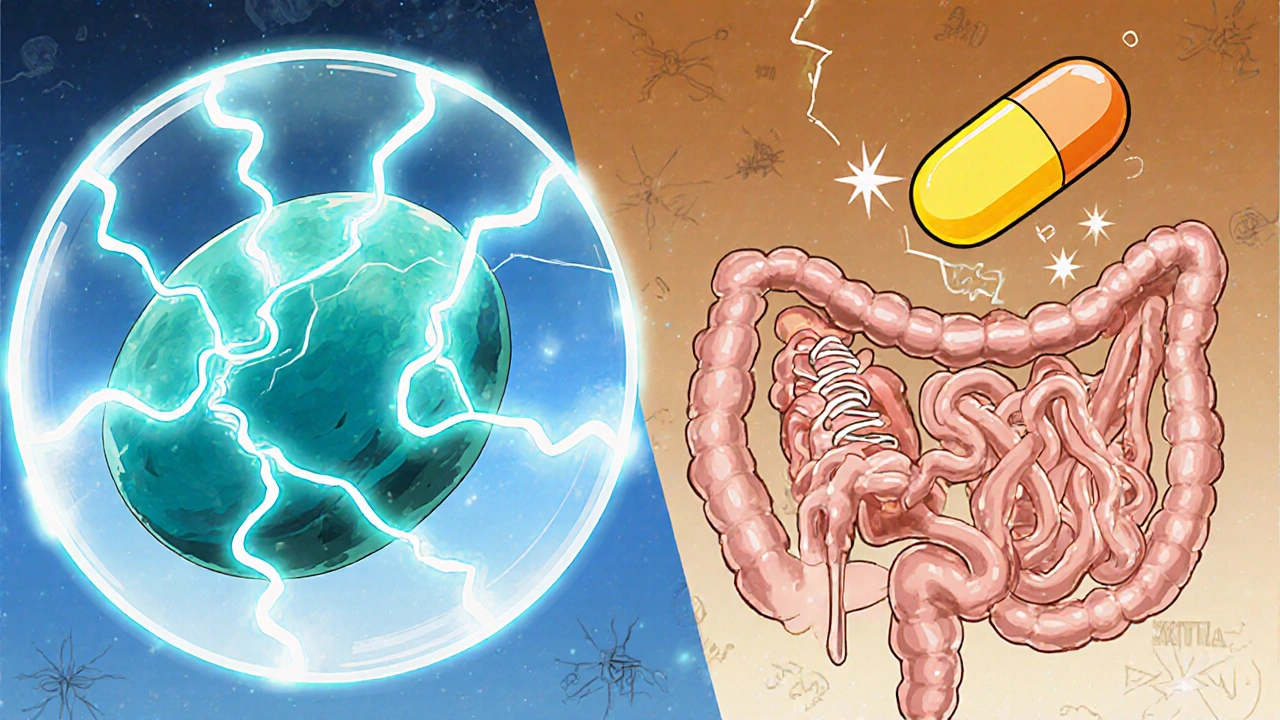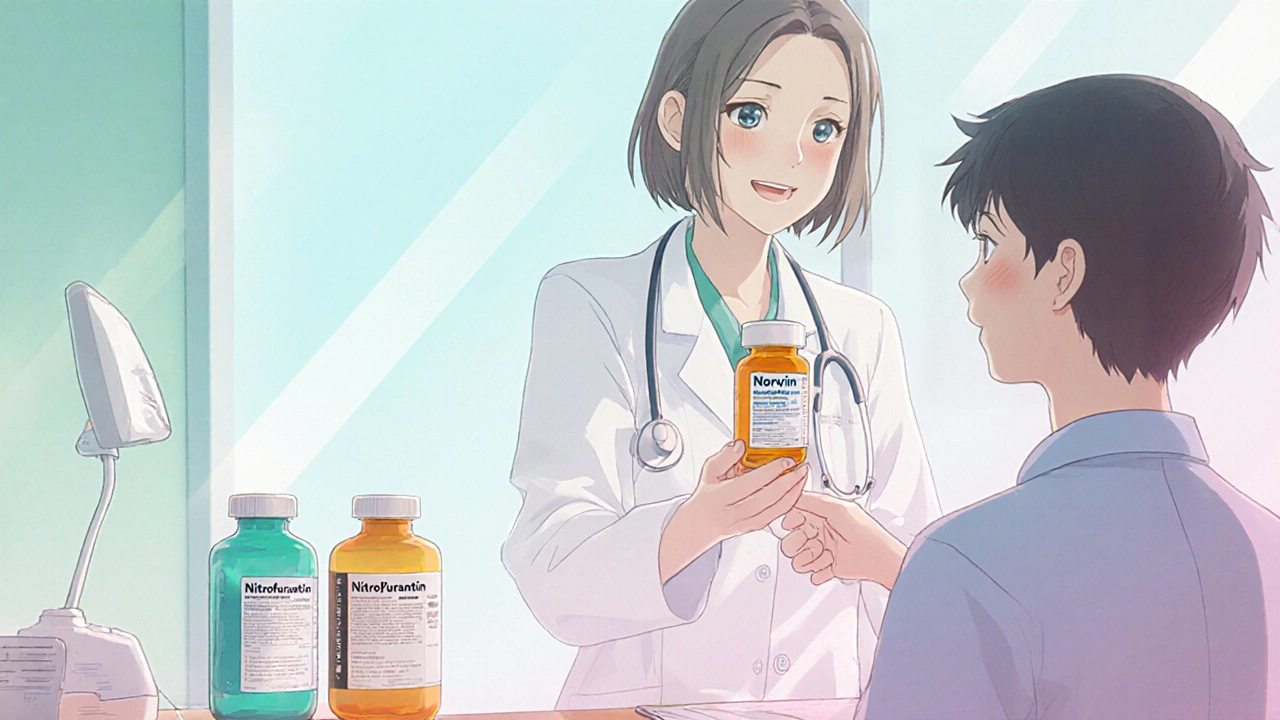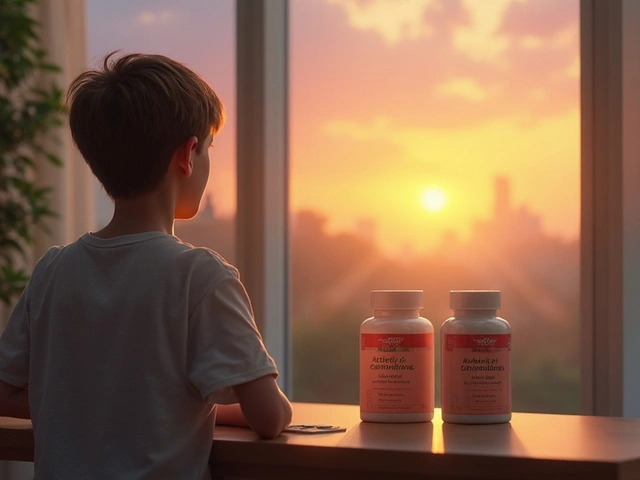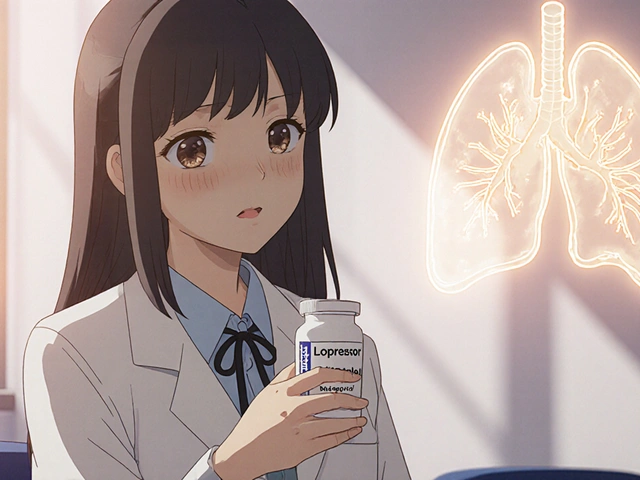UTI Antibiotic Decision Guide
Choose Your Scenario
Quick Facts
US CDC 2024 data shows:
- Fluoroquinolone resistance: 23%
- Nitrofurantoin resistance: 4%
- TMP-SMX resistance: 14%
When your doctor prescribes an antibiotic for a urinary tract infection (UTI), the choice of drug can feel like a gamble. Noroxin (norfloxacin) is a fluoroquinolone that’s been around for decades, but newer guidelines and safety warnings have pushed many clinicians to look at other options. This article breaks down how Noroxin stacks up against its most common alternatives, so you can understand the trade‑offs before you or a loved one start a prescription.
Key Takeaways
- Noroxin is a broad‑spectrum fluoroquinolone typically used for uncomplicated UTIs, but it carries FDA warnings about tendon, nerve, and joint toxicity.
- First‑line alternatives such as nitrofurantoin and trimethoprim‑sulfamethoxazole are safer for most patients, especially pregnant or elderly individuals.
- Resistance patterns vary by region; checking local antibiograms helps avoid ineffective therapy.
- Pharmacokinetic differences (once‑daily dosing vs. multiple‑daily) influence adherence and side‑effect profiles.
- When choosing an antibiotic, weigh infection severity, patient comorbidities, drug interactions, and FDA safety communications.
What is Noroxin (Norfloxacin)?
Noroxin (Norfloxacin) is a synthetic fluoroquinolone antibiotic that interferes with bacterial DNA gyrase and topoisomerase IV, preventing replication and leading to bacterial death. Approved by the FDA in 1992, it quickly became a go‑to oral option for uncomplicated urinary tract infections (UTIs) and certain gastrointestinal infections.
Typical adult dosing for an uncomplicated UTI is 400 mg twice daily for three days, though some clinicians extend to five days for complicated cases. Because it’s absorbed well from the gut, Noroxin reaches therapeutic concentrations in the bladder within an hour.
How Noroxin Works and When It’s Used
As a member of the fluoroquinolone class, Noroxin targets two key bacterial enzymes:
- DNA gyrase (topoisomerase II) - unwinds DNA for replication.
- Topoisomerase IV - separates replicated chromosomes before cell division.
Disrupting these enzymes leads to bacterial cell death, making Noroxin bactericidal rather than merely bacteriostatic. It’s active against many Gram‑negative organisms (e.g., E. coli, Klebsiella) and some Gram‑positive bacteria (e.g., Streptococcus spp.).
Clinicians reserve Noroxin for situations where first‑line agents are contraindicated, the pathogen is known to be resistant, or rapid oral therapy is needed. However, newer safety data have narrowed its role.
Why Alternatives Matter: Safety and Resistance Concerns
In 2016, the FDA issued a black‑box warning for all fluoroquinolones, including Noroxin, citing risks of:
- Tendon rupture ( achilles, rotator cuff )
- Peripheral neuropathy
- Central nervous system effects ( seizures, confusion )
- Exacerbation of myasthenia gravis
These warnings, paired with rising fluoroquinolone resistance worldwide, have prompted guidelines (e.g., IDSA, AUA) to recommend alternatives as first‑line therapy for uncomplicated UTIs.

Overview of Common Alternatives
Below is a quick snapshot of the most frequently prescribed UTI antibiotics besides Noroxin:
- Nitrofurantoin - a urinary‑concentrating drug with minimal systemic exposure.
- Trimethoprim‑sulfamethoxazole (TMP‑SMX) - a sulfonamide combo that blocks folic acid synthesis.
- Ciprofloxacin - another fluoroquinolone, but with a broader gram‑negative coverage.
- Levofloxacin - a later‑generation fluoroquinolone with once‑daily dosing.
- Amoxicillin‑clavulanate - a beta‑lactam/beta‑lactamase inhibitor pair useful for resistant strains.
Side‑by‑Side Comparison
| Antibiotic | Typical Indication | Usual Adult Dose | Common Side Effects | Pregnancy Category (US) | Key Resistance Trend |
|---|---|---|---|---|---|
| Noroxin (Norfloxacin) | Uncomplicated UTI | 400 mg PO BID × 3 days | GI upset, tendon pain, CNS effects | C (avoid unless essential) | Increasing fluoroquinolone‑resistant E. coli |
| Nitrofurantoin | Uncomplicated UTI | 100 mg PO BID × 5‑7 days | GI upset, pulmonary toxicity (rare) | B (safe up to 38 weeks) | Low resistance; ineffective for pyelonephritis |
| Trimethoprim‑SMX | Uncomplicated UTI | 160/800 mg PO BID × 3 days | Rash, hyperkalemia, renal issues | C (avoid first‑trimester) | High resistance in some regions |
| Ciprofloxacin | Complicated UTI, prostatitis | 500 mg PO BID × 7‑14 days | Tendon rupture, CNS effects | C (same warnings as Noroxin) | Similar resistance trends as Norfloxacin |
| Levofloxacin | Complicated UTI, prostatitis | 750 mg PO daily × 5‑7 days | Tendon issues, QT prolongation | C (black‑box) | Rising resistance, especially in E. coli |
| Amoxicillin‑Clavulanate | UTI with beta‑lactamase‑producing bugs | 875/125 mg PO BID × 7 days | GI upset, C. difficile risk | B (relatively safe) | Variable; many strains still susceptible |
Decision Guide: When to Pick Noroxin
Even with its safety baggage, Noroxin can be the right choice in specific scenarios:
- Allergy to first‑line agents: Patients allergic to nitrofurantoin, TMP‑SMX, or beta‑lactams may need a fluoroquinolone.
- Renal impairment: Noroxin’s dosing does not require adjustment until CrCl < 30 mL/min, whereas nitrofurantoin is contraindicated.
- Known susceptible pathogen: A urine culture showing a fluoroquinolone‑sensitive E. coli can justify a short three‑day course.
- Convenient dosing: Twice‑daily for three days may improve adherence compared to a seven‑day nitrofurantoin regimen for some patients.
If none of these factors apply, clinicians should lean toward nitrofurantoin or TMP‑SMX, both of which have fewer severe warnings and solid efficacy.
Safety Tips and Monitoring
When Noroxin is prescribed, follow these safeguards:
- Ask about recent tendon injuries or steroid use - both increase rupture risk.
- Screen for peripheral neuropathy symptoms (tingling, numbness) before starting.
- Advise patients to stop the drug and seek medical attention if they notice sudden joint pain or weakness.
- Review concurrent medications for QT‑prolonging potential (e.g., certain antiarrhythmics).
- For patients over 65, consider alternative agents due to higher adverse‑event rates.

Impact of Local Resistance Patterns
Resistance data differ by geography. In the United States, the 2024 CDC Antibiotic Resistance Report shows:
- Fluoroquinolone resistance in community‑acquired E. coli ≈ 23 %.
- Nitrofurantoin resistance ≈ 4 %.
- Trimethoprim‑SMX resistance ≈ 14 %.
Before committing to Noroxin, consult your laboratory’s antibiogram. If local fluoroquinolone resistance exceeds 15 %, guidelines advise against using any fluoroquinolone for uncomplicated UTIs.
Patient Stories: Real‑World Outcomes
Maria, 32, with a nitrofurantoin allergy: “My doctor gave me Noroxin for three days. The infection cleared fast, but I felt a sudden calf ache on day two. I stopped the drug and the pain faded. We switched to a short course of cefdinir and finished without issues.”
James, 71, chronic kidney disease stage 3: “Because nitrofurantoin isn’t safe for my kidneys, my doctor prescribed Noroxin. I took it for three days, felt fine, and my urine cleared. I had no tendon problems, but the doctor reminded me to watch for any joint pain.”
These anecdotes underline the balance between efficacy and risk. Proper patient selection and close monitoring can make Noroxin work safely, but it’s not a one‑size‑fits‑all answer.
Bottom Line: Weighing Benefits Against Risks
Noroxin remains a potent, fast‑acting fluoroquinolone that can clear an uncomplicated UTI in just three days. However, its black‑box warnings, rising resistance, and availability of safer alternatives mean it should be a second‑line option for most patients. When you’re faced with a prescription, ask your clinician about the infection’s severity, your allergy history, kidney function, and the local resistance map. In many cases, nitrofurantoin or TMP‑SMX will get the job done with fewer headaches.
Frequently Asked Questions
Is Noroxin safe for pregnant women?
Noroxin is classified as Pregnancy Category C, meaning it should only be used if the potential benefit justifies the risk. Most guidelines recommend avoiding fluoroquinolones during pregnancy and opting for nitrofurantoin (after the first trimester) or beta‑lactams instead.
How long does it take for Noroxin to work?
Patients often notice symptom relief within 24‑48 hours, and a full three‑day course is usually enough to eradicate the bacteria in uncomplicated UTIs.
Can I take Noroxin with ibuprofen?
There’s no direct drug‑drug interaction, but both drugs can irritate the stomach. Taking them with food reduces the risk of nausea.
What should I do if I develop tendon pain while on Noroxin?
Stop the medication immediately, avoid exercise, and contact your healthcare provider. They may switch you to a non‑fluoroquinolone antibiotic and evaluate the tendon for injury.
Is a three‑day Noroxin course as effective as a seven‑day nitrofurantoin regimen?
For susceptible bacteria, both regimens achieve similar cure rates. However, nitrofurantoin’s safety profile is better, making it the preferred choice when it’s an option.







Comments
Taylor Haven
It is downright alarming how the pharmaceutical industry continues to push Noroxin onto unsuspecting patients while secretly colluding with regulatory agencies to downplay the catastrophic side effects that have been documented for decades. The black‑box warnings are merely a smokescreen, a carefully crafted narrative designed to keep the public obedient and dependent on powerful drug conglomerates. When you read about tendon ruptures, peripheral neuropathy, and central nervous system toxicity, you must ask who benefits from these silent epidemics. The answer, of course, is the same shadowy cabal that profits from every prescription filled, every follow‑up visit, and every costly complication that follows. Moreover, the rise of fluoroquinolone resistance is not an accident; it is a manufactured crisis that forces physicians to prescribe newer, even more expensive antibiotics, tightening the grip of the industry. The guidelines that now favor nitrofurantoin or TMP‑SMX are not purely evidence‑based; they are a strategic compromise to preserve the market share of older drugs while appeasing patient advocacy groups. One cannot ignore the fact that local antibiograms are often manipulated to show higher resistance rates, prompting doctors to reach for fluoroquinolones as a last resort. In addition, the regulatory language around “Category C” pregnancy labeling is deliberately vague, ensuring that pregnant women remain a captive audience for off‑label use under the guise of “clinical judgment.” All these layers of deception form an intricate web of control that keeps the average citizen in the dark about safer, cheaper alternatives. It is our moral duty to demand transparency, to question the motives behind every new drug label, and to protect vulnerable patients from being used as guinea pigs in an endless cycle of profit. Only by exposing these conspiracies can we begin to restore trust in medicine and safeguard public health. The cost of complacency is far too high, and the lives of countless individuals hang in the balance.
Sireesh Kumar
Well, that’s certainly a dramatic take, and I can see why you’d feel uneasy about the whole situation, but let’s not forget that the data does show nitrofurantoin works well for most folks. Honestly, I’ve seen patients bounce back in just a few days with a simple regimen, and the side‑effect profile is far less theatrical than a fluoroquinolone. While the industry may have its interests, doctors still have a duty to choose the safest effective therapy. So, maybe the drama can be saved for the movies, not our prescription pads.
Ritik Chaurasia
Listen, the push for Western‑made antibiotics like Noroxin often ignores the rich history of herbal and locally sourced remedies that have fewer systemic risks. In many cultures, we’ve relied on botanicals that don’t jeopardize tendons or nerves, yet the global market tries to stampede us into a one‑size‑fits‑all pill. It’s infuriating to watch multinational corporations dictate what we should swallow without considering regional microbiomes. If we continue to bow to these aggressive marketing tactics, we’ll lose our therapeutic sovereignty.
Mary Keenan
Skipping Noroxin for nitrofurantoin is a no‑brainer.
Kelli Benedik
OMG, the whole Noroxin saga feels like a soap opera! 😱 The side effects are like plot twists you never wanted, and the doctors are the dramatic protagonists trying to save the day. I totally get the fear of tendon ruptures – that's a nightmare scenario for anyone who loves running. But hey, if nitrofurantoin can clear the infection without the drama, why not give it the starring role? 🌟